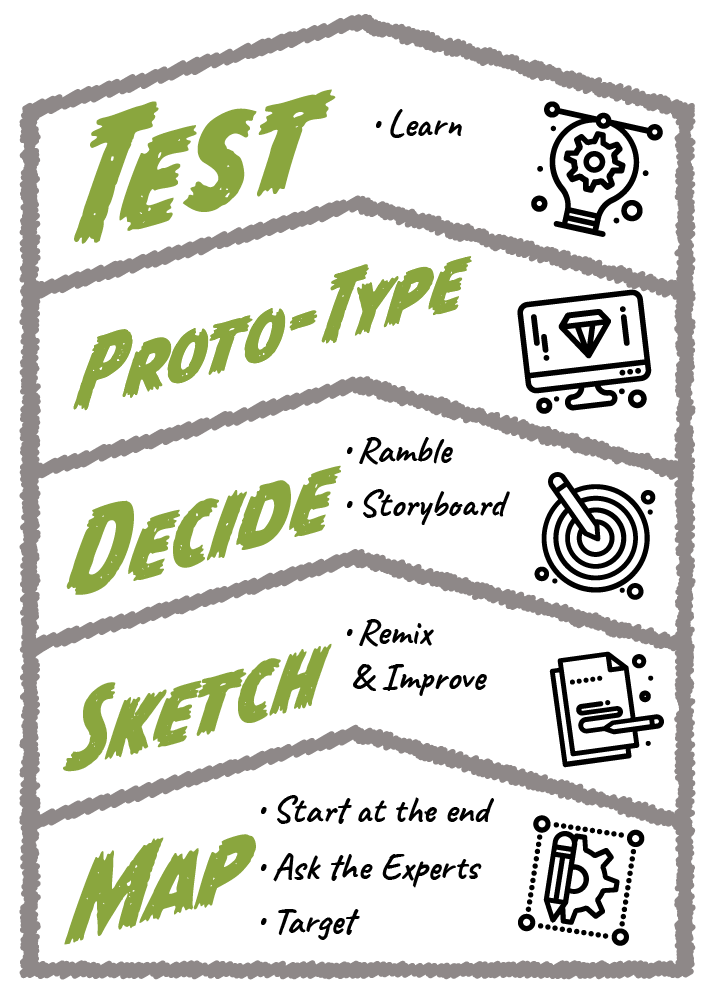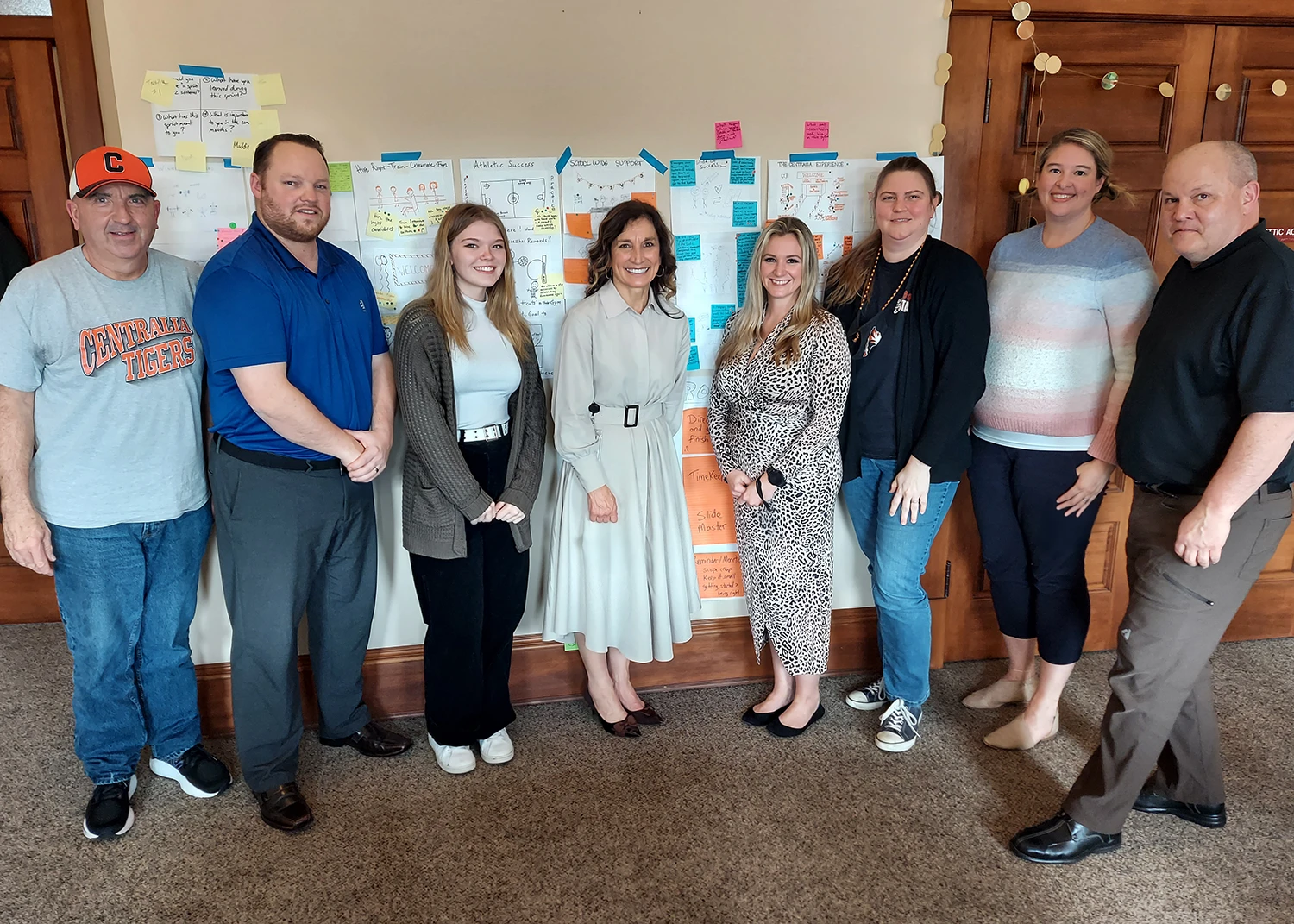Programs
Design Sprint
Why a Sprint
Organizations stall when issues stay abstract, perspectives stay siloed, or decisions keep cycling without closure. A sprint creates a protected container with the right people, a shared problem frame, and proven facilitation. Participants surface insights, test assumptions, and co-create solutions while momentum is high. The result is accelerated progress with less rework and more ownership.
Use a sprint when you need to:
- Align a new executive team around purpose, operating agreements, or strategy themes.
- Design or refresh a program, service line, retreat, or customer experience.
- Untangle a complex challenge with multiple stakeholders and competing hypotheses.
- Prioritize a portfolio of initiatives under resource constraints.
- Build an implementation roadmap that balances ambition with pragmatism.
- Reboot a stalled project or cross functional collaboration.
Our Sprint Philosophy
1. People first, process second.
2. Psychological safety is nonnegotiable.
3. Evidence over opinion.
4. Tangibility early.
5. Decision discipline.
6. Momentum past the finish.
Core Sprint Types:
- Foundation Sprint (2-Day) – establishes shared purpose, principles, and nearterm priorities for a new or recalibrating leadership group. Often an entry point for a longer advisory or coaching relationship.
- Full Design Sprint (4-Day) – deeper exploration and solution design: frames the challenge, generates and prototypes solution concepts, builds a sequenced implementation roadmap with success indicators, and assigns clear ownership.
- Strategy & Prioritization Variant – (within the 4-Day format) surfaces drivers, tests strategic hypotheses, and sequences the initiative portfolio with clear criteria.
- Service / Program Design Variant – (within the 4-Day format) maps stakeholders, journeys, pain points, and produces a prototype concept with success metrics and pilot plan.
- Process Improvement Variant – (within the 4-Day format) streamlines a critical workflow, clarifies roles, and reduces friction points with measurable efficiency targets.
- Innovation Variant – (within the 4-Day format) explores new value propositions or service extensions, creating and pressure testing lightweight prototypes.
(We tailor naming and emphasis to match internal language you already use.)
Typical Flow (Applied Across 2 or 4 Days)
- Frame – Prework interviews and data review clarify scope, success criteria, constraints, and stakeholder landscape.
- Explore – Shared understanding: current state mapping, stakeholder insights, root cause exploration, and opportunity framing.
- Generate – Divergent ideation using structured creativity methods; rapidly produce options, sketches, narrative statements, and scenario drafts.
- Decide & Prototype – Prioritize with agreed criteria. Build lowfidelity prototypes (visual models, draft communications, service blueprints, decision trees) and define validation steps.
- Commit & Launch – Translate decisions into a concise roadmap: owners, milestones, early indicators, and a 30, 60, 90 day momentum plan.
(Foundation Sprints concentrate primarily on Phases 1–3 with an initial Commit plan; Full Design Sprints cover all five phases in greater depth with more robust prototyping.)
Roles & Participants
- Sponsor – sets intent, protects time, clears barriers.
- Core Team (6–10) – multidisciplinary decision makers and implementers.
- Extended Voices – subject matter experts or stakeholders who drop in for targeted segments to inform without bloating the core team.
- Clarity Facilitator(s) – guide process, maintain psychological safety, capture outputs live, and ensure decision clarity.
Deliverables (Tailored)
Depending on sprint focus you may leave with:
- Problem framing summary and success criteria.
- Stakeholder or journey maps.
- Prioritized opportunity statements.
- Concept sketches or narrative prototypes.
- Service blueprint or draft program architecture.
- Decision logs with rationale.
- Initiative portfolio with sequencing and resourcing implications.
- 30, 60, 90 day action and communication plan.
- Metrics dashboard starter (leading and lagging indicators).
What Makes Clarity’s Approach Distinct
- Integration with leadership development – microcoaching moments strengthen collaborative muscle while producing outputs.
- Adaptive facilitation – we modulate pace, energy, and depth in real time rather than forcing a rigid template.
- Plain language artifacts – deliverables are written so a broader audience can immediately act, limiting translation risk.
- Sustainability design – we assign owners and embed quick wins, preventing postsprint stall.
- Emotional and cognitive balance – reflection cycles prevent group overwhelm and support higher quality thinking.
After The Sprint
- We offer light touch sustainment or deeper advisory support to embed decisions:
Implementation coaching sessions. - Progress check facilitation (quarterly or milestone based).
- Rapid issue resolution microsprints.
- Leader communication drafting and cascade planning.

Getting Started
Schedule a short discovery conversation. We listen first, propose the right sprint format (2-Day Foundation or 4-Day Full), and outline clear pricing (fixed fee with defined deliverables). From there we handle prep logistics, participant readiness, and artifact capture so your team can focus on the work that matters.

